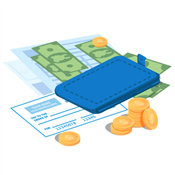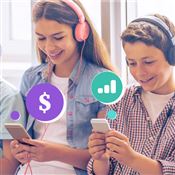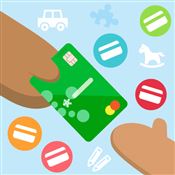Chase First Banking Review
Is Chase First Banking the right debit card for your kid? Before you open an account, find out the pros, cons, fees, and more.
Overall Score | 3.9 | ||
Savings | 2.5 | ||
Minimum Deposit | 5.0 | ||
Checking | 3.5 | ||
Price | 5.0 | ||
Mobile App | 4.0 | ||
Customer Service | 3.0 | ||
Ease of Use | 5.0 | ||
Education | 3.5 | ||
Pros and Cons
- No monthly fee
- Robust parental controls
- 15,000 Chase ATMs nationwide
- Accounts don't earn interest
- No in-app educational content
- No investment account
Bottom Line
Good debit card for kids with flexible parental controls
Financial education starts younger than you think.
If you haven't begun teaching your kid about money, they're probably learning it from somewhere else—TV, social media, or other outlets you can't control.
One of the best ways to safely introduce your kid or teen to smart financial habits is through a banking app.
Chase First Banking is a debit card and app for kids ages 6 to 17. It encourages responsible spending and saving. Plus, it offers parental controls to keep your kid in check.
Is Chase First Banking the best account for your family? Learn more about the debit card and how it stacks up against competitors like Greenlight and Acorns Early.
What is Chase First Banking?
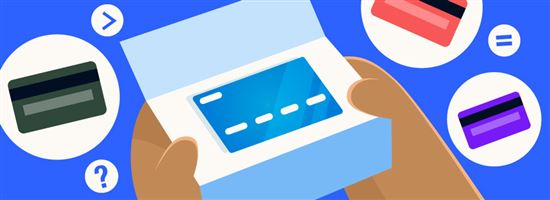 |
Chase was founded in New York in 1799. Today, it's one of the biggest banks in the world, with $2.6 trillion in assets and operations.
In 2020, Chase launched a debit card and bank account for kids called Chase First Banking. It was designed to help parents teach their kids about responsible money management. The account is open to kids of Chase checking customers only.
Chase First Banking offers features like robust parental controls, allowance and chore lists, and savings goals.
Chase First Banking Features
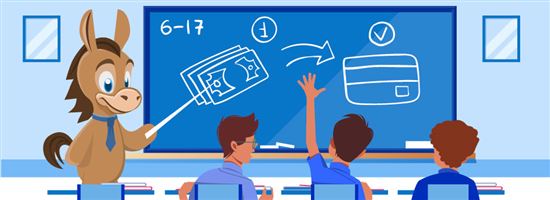 |
| Age | 6 to 17 years |
|---|---|
| Monthly Fee | $0 |
| Minimum Deposit | $0 |
| APY | None |
| ATM Access | 15,000+ Chase ATMs nationwide |
Chase First Banking is a no-fee account, which is great for kids who are still new to handling money.
The debit card and app offer some unique features to help parents teach their kids and teens. Take a closer look at these special features below:
Debit Card
Chase First Banking comes with a Visa debit card to let your kid spend their money online and in store. The secure card supports PIN, chip, and contactless payments.
The debit card gives your child as much freedom as you want to give them. You'll be able to set spending limits so your kid doesn't run wild with their new card. (Learn more about parental controls below.)
Your kid will also get access to more than 15,000+ Chase ATMs and more than 4,700 branches across the U.S. There are no fees to use in-network ATMs, so withdrawing cash on the go is simple.
The debit card usually arrives in about a week.[1]
Mobile App for Parents
Chase First Banking comes with a separate mobile app for parents and kids. The parent app is the same Chase Mobile app you already use for your checking account. You can manage your personal accounts and Chase First banking accounts in one place.
For parents, the app offers a lot more control. Here are some key functions available on the parent app:
- Track your kid's spending and saving
- Transfer money to savings goals or for spending
- Turn on account alerts
- Set limits on where/how much your kid can spend
- Set ATM withdrawal limits
- Approve or decline money requests
- Assign recurring or one-time chores
- Set weekly, every 2 weeks, or monthly allowance
With the robust parental controls, your kid can safely learn how to spend and save money. Sending money through an app can be better than cash (which kids can misplace). Plus, the spending limits will ensure your kid isn't making sneaky purchases you don't know about.
You can even get alerts and get real-time notifications about your kid's account. Basically, the account gives your kid flexibility without letting anything fly under your radar.
Mobile App for Kids
The Chase mobile app for kids offers unique features to help your child manage their money. Here are some key functions available on the kid's app:
- View balance and transactions
- Request money from parent
- Spend, save, and earn money
- Set savings goals
- Complete chores for allowance
The app encourages teens and kids to save by helping them create their own personal savings goals. Your kid could set a goal for new shoes, for example. They can transfer money to the goal and gradually work toward the full amount.
Another nice feature for kids is the chores and allowance function. Parents can add allowance amounts for chores through the app. Your kid can complete them in order to get paid. This is great if you want to help your kids feel like they really earned the money.
Chase First Banking Fees
| Monthly Fee | $0 |
|---|---|
| Minimum Deposit | $0 |
| Minimum Balance | $0 |
| Overdrafts | $0 |
| Chase ATM | $0 |
| Non-Chase ATM | $3 fee per withdrawal at a non-Chase ATM in the U.S. and the U.S. territories. $5 fee per withdrawal at a non-Chase ATM outside of the U.S. and the U.S. territories. Surcharge Fees from the ATM owner/network still apply. U.S. territories include American Samoa, Guam, the Northern Mariana Islands, Puerto Rico and the U.S. Virgin Islands. |
| Expedited Shipping for Replacement Card | $5.00 |
| Foreign Currency Conversion | 3% |
This is one of the few free banking apps for kids. Most other accounts have a monthly or annual fee to keep the account open. But with Chase First Banking, you could use the app and debit card without ever running into a fee.
There is a non-Chase ATM fee every time you use an out-of-network ATM.[2] But with 15,000+ Chase ATMs across the nation, this should be pretty easy to avoid.
It also costs 3% of the transaction to make a purchase or ATM withdrawal in another currency. This might be an issue if your family is on vacation or abroad for any reason. But it won't be a common issue for everyday use.
How to Open an Account
The Chase First Banking account is available for current Chase checking customers only.
If you already have a Chase checking and your kid is 6 to 17 years old, here's how to get started:
- Go to Chase.com and click Open an account >>
- Sign in with your Chase login
- Complete the application and link your existing Chase account
- Receive your child's debit card in about a week
To complete the application, you'll need to provide your child's and your personal info. This includes your full name, date of birth, Social Security number, and address. You and your kid need to live at the same address to be eligible.
Qualifying Chase Checking Accounts
If you have any of these accounts, you're eligible to open a Chase First Banking account for your kid:
- Chase Total Checking®
- Chase Secure Checking℠
- Chase Premier Plus Checking℠
- Chase Sapphire℠ Checking
- Chase Private Client Checking℠
How to Deposit Money
Parents can transfer money to a Chase First Banking account in two different ways:
- One-time transfer. Sign in to Chase.com or the mobile app. Choose "Transfer money" from the Chase First Banking dashboard.[3]
- Allowance: Sign in to Chase.com or the mobile app. Go to the "Earn" tab and choose "Create an allowance" to set up a recurring transfer.[4]
You're limited to making transfers from the parent app only. Unfortunately, you can't deposit money from an ATM or set up direct deposit. Chase First Banking doesn't support peer-to-peer transactions like Zelle, Venmo, PayPal, or Cash App.[5]
This can be a bit inconvenient for friends or family who want to send money to your kid. They'll have to send the money to your personal checking first. From there, you can transfer money to your kid's account.
How to Close an Account
You have a couple options for closing a Chase First Banking account:
- At a Chase location: The fastest way to close your account is to visit a local Chase branch. The bank teller will be able to close the account for you on the spot.
- By Phone: You can call 1-800-935-9935 to cancel your account, 24/7. Your account will be closed within 24 hours.
- Online: You can log onto the website or your Chase app and send a message through the Secure Message Center. This could take a few days for someone to get back to you.
If the personal checking account is closed, the Chase First Banking account will stay open for 2 statement cycles. If there's no new checking account linked by the end of the 2 cycles, the Chase First Banking account will also be closed.
Any money still in the account will be sent to you by check.
What We Like About Chase First Banking
- Free debit card and banking app for kids
- Free access to 15,000+ Chase ATMs
- No overdraft fees
- Robust parental controls and spending limits
- Set chores and allowances
- Savings goals encourage good habits
- Debit card supports contactless payments
- Fast shipping for debit card
What We Don't Like
- Only supports money transfers from parent's Chase app
- Account doesn't earn interest
- No investment account
- Limited deposit options
- Can only link one parent account
- No in-app educational content
How It Compares
 |
Chase First Banking is a relatively new debit card for kids. Find out how it stacks up against other popular kid banking apps:
| Monthly Fee | Minimum Age | ||
|---|---|---|---|
| Chase First Banking | $0 | 6 years old | Learn More |
| Greenlight |
| No minimum age requirement | Learn More |
| Acorns Early | Individual Child - $5 per month Family Plan - $10 per month | 6 years old | Learn More |
| Copper | $0 | 6+ years old | Learn More |
| FamZoo | $5.99 per month, OR $59.90 for 12 months | No minimum age requirement | Learn More |
Chase First Banking vs. Greenlight
Chase First Banking is actually powered by Greenlight, and the two services share some of the same features. Both apps offer basic banking, a debit card, robust parental controls, chores, and savings goals.
Greenlight goes beyond that to offer great in-app educational content and an investing account for kids. It also comes with a savings account that actually earns savings reward—a rarity in kid banking apps.
Of course, these extra features come at a greater cost. Greenlight has 4 tiers of paid accounts to choose from:[6]
- Greenlight Core ($5.99/mo): Includes kids' debit card, basic banking, educational content, parental controls, financial literacy games, credit card for parents, investing for parents with limited features, and 2% savings reward.
- Greenlight Max ($10.98/mo): Adds an investing platform and research tools for kids and parents, priority customer support, protection plans, cash back on purchases, and 3% savings reward.
- Greenlight Infinity ($15.98/mo): Adds family location sharing, crash detection, SOS alert, cash back, and 5% savings reward.
- Greenlight Family Shield ($24.98/mo.): Adds financial account monitoring, suspicious activity alerts, up to $100K deceptive transfer fraud coverage, up to $1M identity theft coverage, and 6% savings reward.
Keep in mind these prices are a flat rate for up to 5 children. If you have a large family, Greenlight could still be of great value.
Chase First Banking vs. Acorns Early
Acorns Early (formerly GoHenry) is the most similar to Chase First Banking. With Acorns Early, you'll get banking service, chores and allowances, great parental controls, and a contactless debit card.
The Acorns Early debit card comes in 35+ different designs and includes your child's name in the logo. But you do have to pay $5 to get a custom card.
The account also has a monthly fee of $5 for the individual child and $10 per month for the family plan, which covers up to 4 children.[7] This seems to be a better deal if you need a debit card for multiple kids.
Compared to Chase First Banking, the Acorns Early app makes learning a little more exciting for kids. The app has a lot of educational tools, including Money Missions, which turn financial lessons into fun games.
You'll also have more ways to deposit money to your child's account, including direct deposit and a secure sharing link for families and friends.
Acorns Early Kids' Debit Card
- Real-time spend notifications.
- Block and unblock cards easily.
- Teach financial independence safely.
Frequently Asked Questions
Is Chase a good bank for beginners?
Chase can be a good option for your child's first bank account. Chase First Banking is free, so your kid can learn how to manage money without running into any fees.
How do you set up alerts in the Chase First Banking app?
Here's how you can set up account alerts from your child's Chase First Banking app:[8]
- Sign in to your Chase app and choose the Chase First Banking account
- Tap the profile icon in the top right and choose "Manage alerts"
- Tap "Chase First Banking" and choose your alerts
- Choose your alert method (email, push notification, text message)
- Tap "Save changes"
Can you use Zelle with Chase First Banking?
Chase First Banking does not support any peer-to-peer transactions, including Zelle, Venmo, PayPal, and Cash App.
Does Chase First Banking have a bonus?
Chase First Banking does not currently have a bonus. But you can check out Chase promotions here and see when the latest deals happen.
Bottom Line
Chase First Banking is one of the best apps to teach your kids smart spending habits. Best of all, it's free to use.
The account lacks some advanced features, like investing and in-app lessons. But overall, it's still a solid debit card and money app for your kids and teens. If you're a current Chase checking customer, it's worth trying out Chase First Banking for your kid.
Not ready to commit to Chase First Banking just yet? Take a look at our other reviews of the most popular banking apps for kids.
References
- ^ Chase Bank. About Chase First BankingSM, Retrieved 08/14/2024
- ^ Chase. Additional Banking Services and Fees, Retrieved 2/25/2022
- ^ Chase. Chase First Banking Manage Money Requests, Retrieved 8/14/2024
- ^ Chase. Chase First Banking Determine & Set Allowance, Retrieved 8/14/2024
- ^ Chase. Does Chase First Banking support Peer-to-Peer transactions?, Retrieved 8/14/2024
- ^ Greenlight. Compare Plans, Retrieved 10/19/2025
- ^ Acorns. Acorns Early: Pricing, Retrieved 11/30/2024
- ^ Chase. Chase First Banking Account Alerts, Retrieved 2/25/2022
Donna Tang is a content associate at CreditDonkey, a credit card comparison and reviews website. Write to Donna Tang at donna.tang@creditdonkey.com. Follow us on Twitter and Facebook for our latest posts.
Note: This website is made possible through financial relationships with some of the products and services mentioned on this site. We may receive compensation if you shop through links in our content. You do not have to use our links, but you help support CreditDonkey if you do.
|
|
| ||||||
|
|
|


